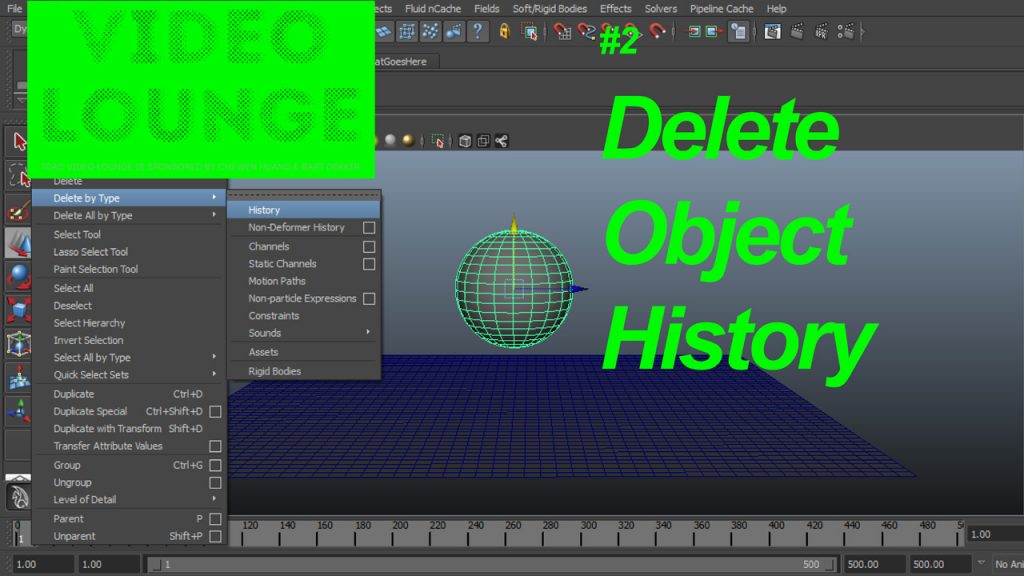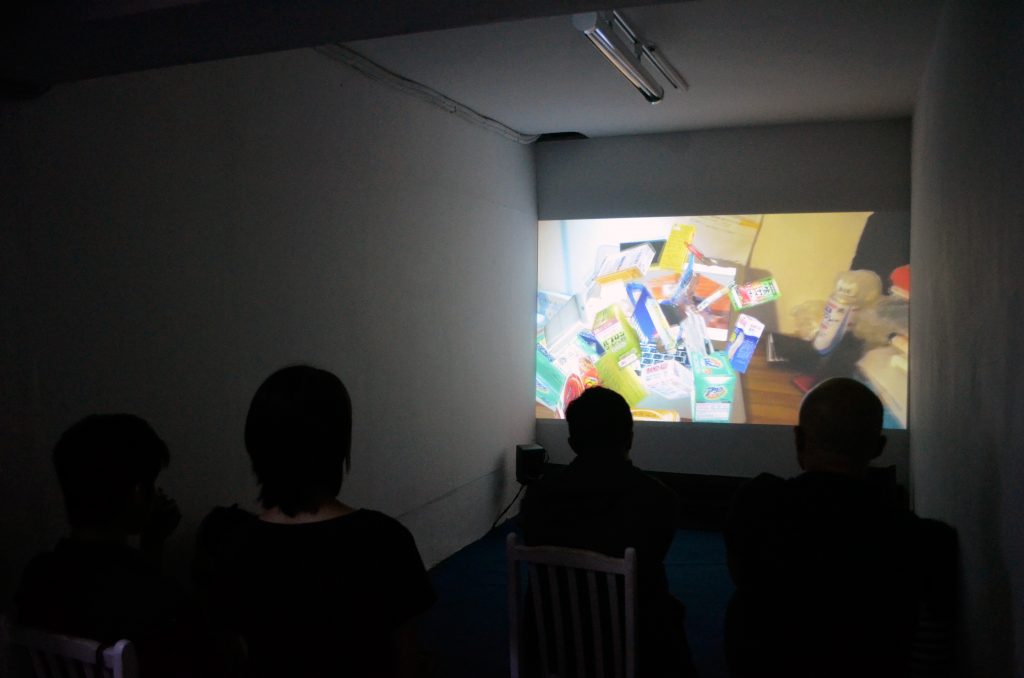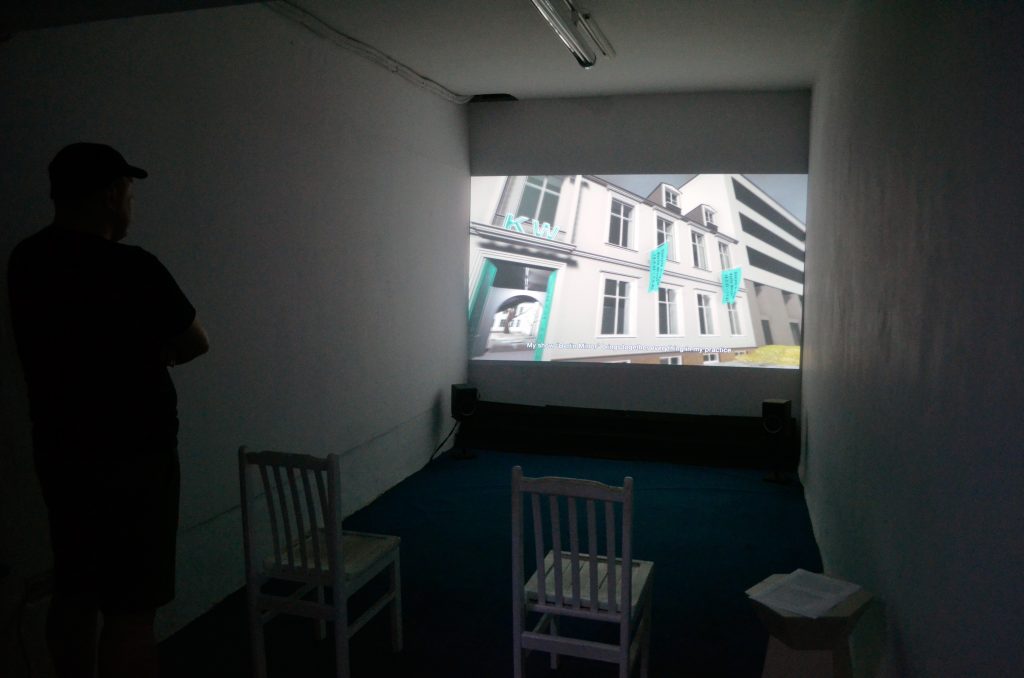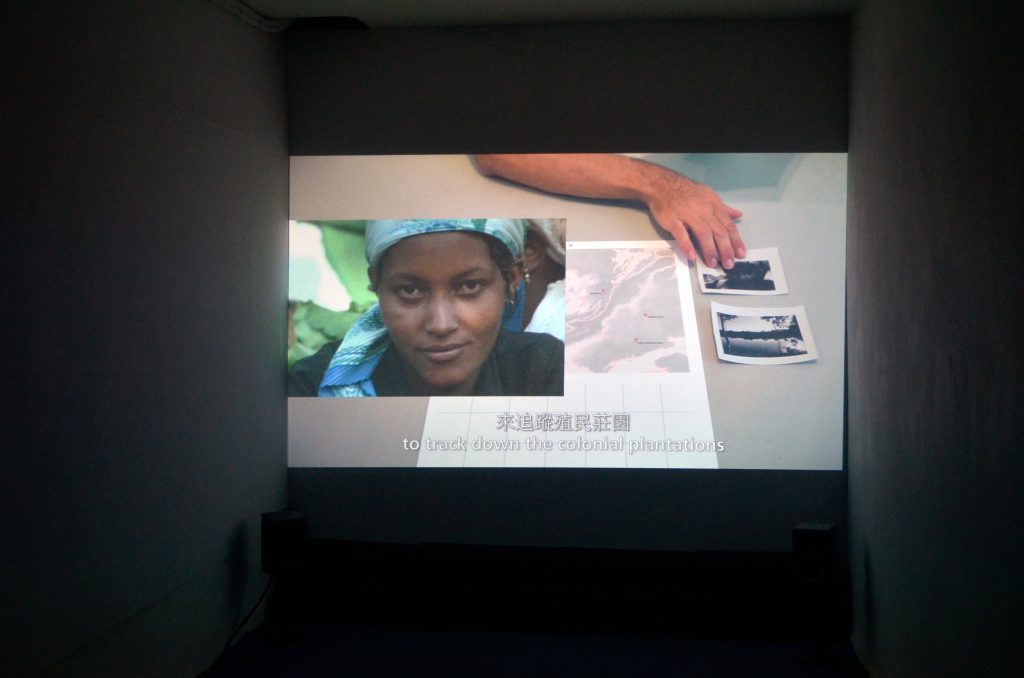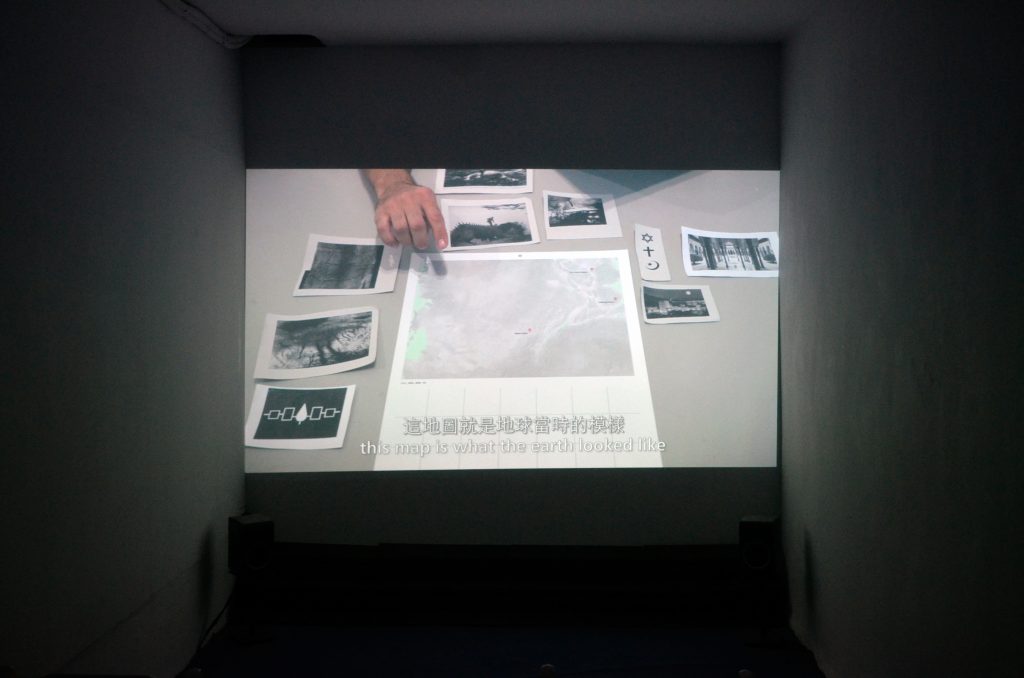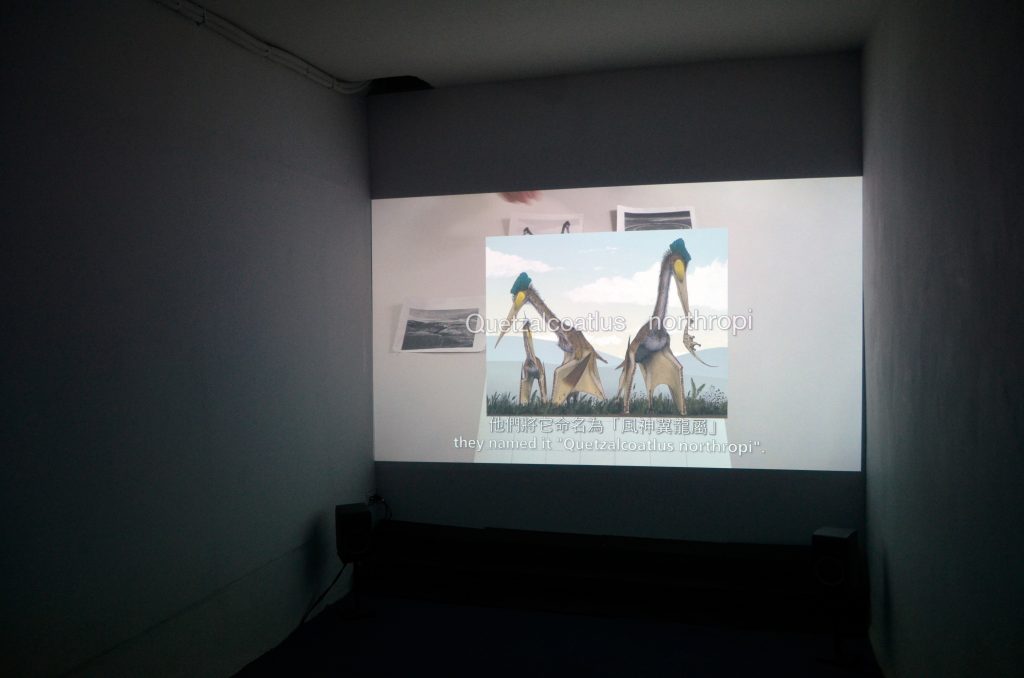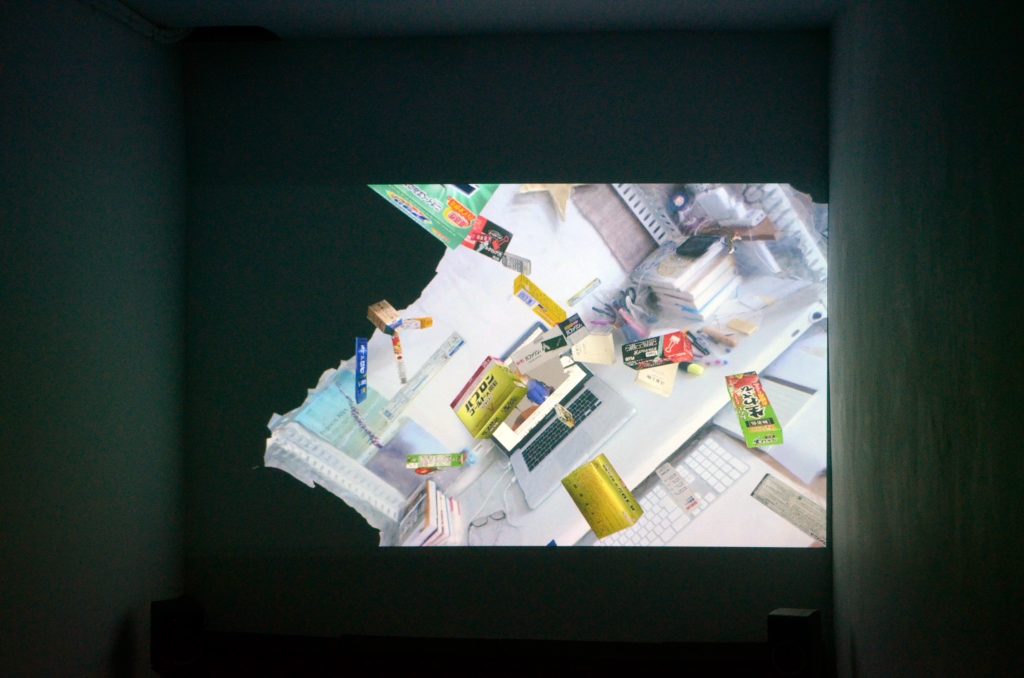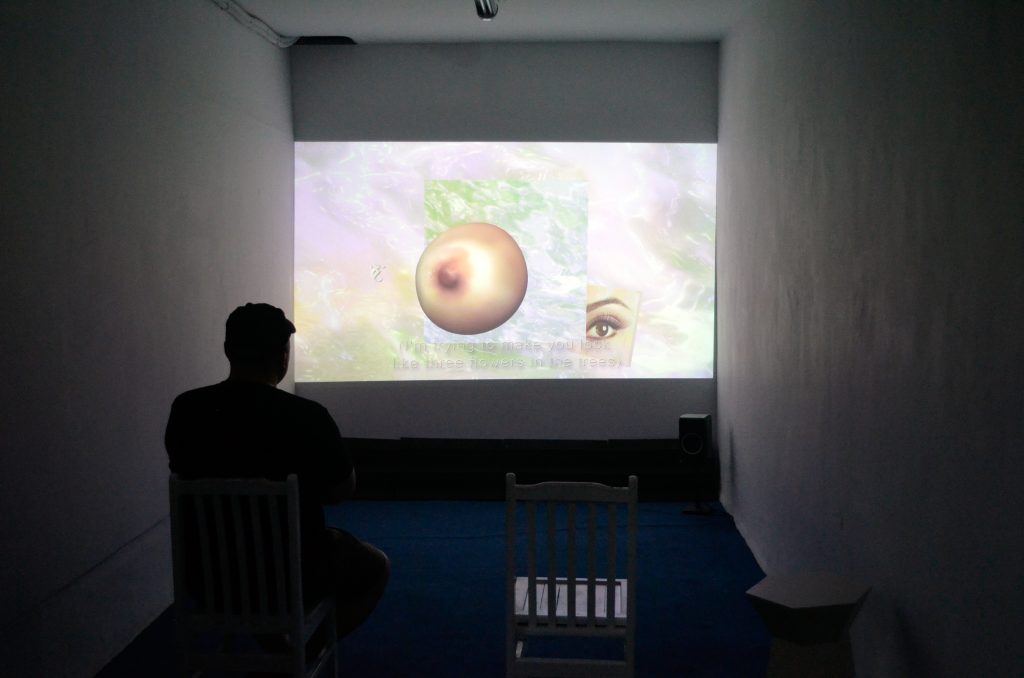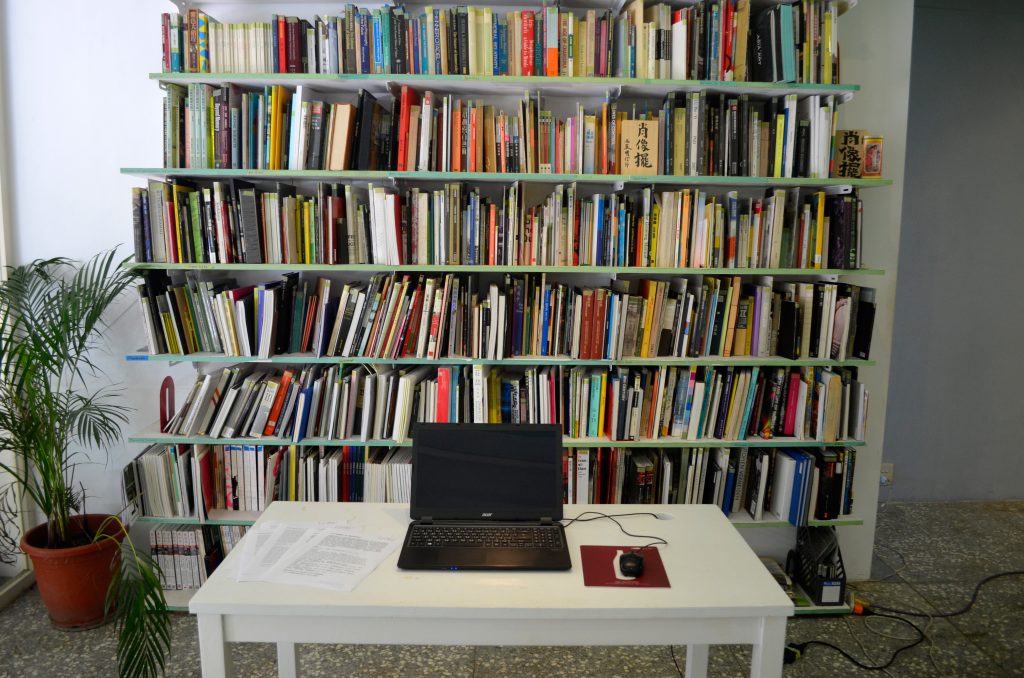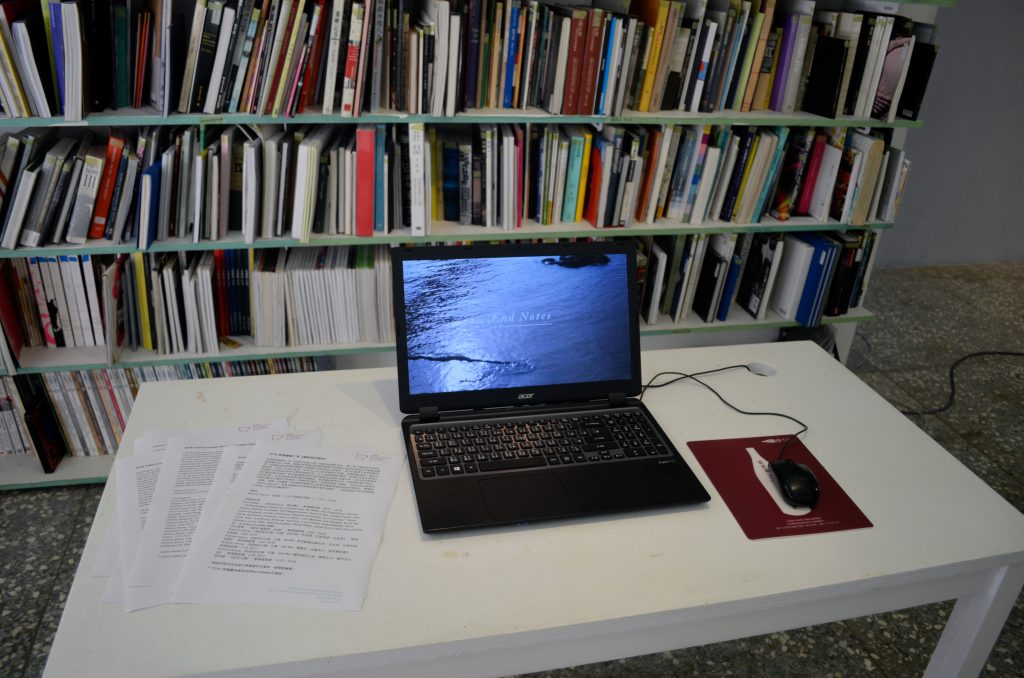(For English, Please Scroll Down)
2018 錄像廳第二季《刪除物件歷史》
日期:8/25 – 9/2, 1 – 7pm. (週一不開放)
地點:台北當代藝術中心(台北市大同區保安街49巷11號1樓)
延續錄像廳第一季《在瘋狂追劇之前》對觀看實踐的探討,第二季《刪除物件歷史》將著重在個人電腦、網路與影像應用軟體陸續普及對圖像生產與流通產生的衝擊與轉變。影像與音軌處理軟體讓大眾媒體中的影像得以被解放,更多的觀眾不再是被動的觀看者,同時也成為生產者。他們可以自由對影像產生誤讀,透過網路傳遞,隱身在影像當中的意識形態得以輕易跨越地理、文化與族群間的邊界,甚至附身在伴隨著出現的數位擬仿圖像。數位圖像讓我們可能在親眼見到物件主體之前,就已經見過該物件的影像。在這些過度真實的數位圖像前,是否還能眼見為憑?如果開始進行考古,物件的數位影像該不該被記入該物件的歷史?而當我們點下刪除,不復存在的是物件,圖像,還是一段編碼?我們對時間感知已逐漸與機器時間與網路時間同步,數碼物(Digital Objects)完美地鑲嵌在自然與技術的複合結構中,人類自身是不是也是棲居在這第二自然中的數碼物?
關於作品:
//書房
Antonio Serna, 《註腳(一份不完整的清單)》,8:11,2018.
地質學的中的名詞「深層時間」(Deep Time)指向超越生物存在,地球形成的時間。在德國媒體理論學者 Siegfried Zielinski 眼中,是用以挖掘舊機器中引向新媒體的線索的方法。考古的過程永無止境,物件作為證據的存在遠遠超越人類存在的時間,也註定永遠是一份不完整的清單。
//網路空間
Lorna Mills ,《物件的方式,第四集》,單頻道錄像,29:27,2016.
(本件作品與 Mert Keskin a.k.a Haydiroket, Bill Miller, Alix Desaubiaux, Krystal South, Rachael Archibald, Will Pappenheimer, Dave Greber, Chiara Passa, John Boyle-Singfield, Gunilla Josephson, Melanie Clemmons, Curt Cloninger, Terrell Davis, Morehshin Allahyari, Amy Lockhart, John Marriott, Lilly Handley, Emily Vey Duke, Kate Armstrong, Myfanwy Ashmore, Luke Painter, Aram Bartholl, Elena Garnelo, Lorna Mills, Ellectra Radikal, Nicole Killian, Jacob Ciocci, Rick Silva共同完成,並且由Lorna Mills 剪輯)
《物件的方式》由藝術家 Lorna Mills 發起,由114位 “網路”藝術家共同創作,重新演繹約翰‧伯傑著名的電視節目《觀看的方式》(Ways of Seeing)。文字與圖像透過不同媒材生生不息,如同藝術家 Lorna Mills 所述:「這是關於藝術╱電視╱網路的藝術。」
谷口曉彥 ,《霍莉·赫倫登 – 合唱》,單頻道錄像,6:56,2014.
《霍莉·赫倫登 – 合唱》是由日本藝術家谷口曉彥與美國音樂人霍莉·赫倫登的合作,以音樂錄影帶(MV)的形式登場。作品的視覺同樣是谷口曉彥邀請數位友人提供工作環境的照片以3D軟體處理而成。個人電腦已成為最親密的接口與日常,我們得以瀏覽、穿越、俯瞰與仰視。
Antonio Serna, 《相同的太陽,日曆:60 Ma – 希克蘇魯伯隕石坑,拉文塔,哈維利納地層》,單頻道錄像,2:56, 2018.
Antonio Serna, 《相同的太陽,日曆:245 Ma – 手指湖,紅色城堡,水晶宮》,單頻道錄像,3:08, 2017.
Antonio Serna, 《相同的太陽,日曆:280 Ma – 瑪爾法,世貿中心,傑貝爾依羅》,單頻道錄像,1:33, 2017.
Antonio Serna, 《相同的太陽,日曆:345 Ma – 蘇利南河上游,詹姆士河,幾內亞比紹》,單頻道錄像,2:39, 2017.
地圖軟體壓縮空間上的距離感,更有可能進一步地壓縮時間感。Antonio Serna 系列作品《相同的太陽》將時間軸往後倒退「深層時間」的尺度,以百萬年作為單位,想像人類各種掠奪殺戮活動是如何發生在歷史之前與地理之旁,在同一張地圖上抽絲剝繭出隱而未現的關聯。
陸明龍,《柏林之鏡》,單頻道錄像,11:21,2016.
就像作品中虛構的藝術家 Daniela Graham 所說的:「虛擬實境是我讓現實復活的方法。」繪圖軟體讓她得以「創造紀念碑而無需實際建造。」在《柏林之鏡》中,歷史事件在未來以展出作品中的圖像現身,而《柏林之鏡》自身同樣現身在屬於未來的展覽。時間同步在屬於過去的未來與屬於未來的過去。
*網路空間內作品皆以單頻道形式播映,每整點輪播。
關於藝術家
陸明龍(生於1982年法蘭克福)是一位藝術家和電影製作人,目前生活工作於倫敦。他的藝術實踐聚焦於虛擬實境和模擬。透過遊戲軟體、3D動畫、裝置與行為演出,陸明龍創造出限地製作的虛擬世界以及思辨式影片。藉由將虛構的情節安插至現實場景,他的作品反映了數位世界以及虛擬世界對人類現實的感知的影響。
最近的展覽包括:2065,K11藝術空間,香港; Play Station,倫敦藝術夜,倫敦(2017年); Hyperpavilion,Arsenale Nord,威尼斯(2017年);The New Normal,UCCA,北京(2017年); Glasgow International,Tramway,Glasgow(2016); SeMA Biennale Mediacity Seoul 2016,Seoul Seoul of Art,Seoul(2016); Missed Connections, Julia Stoschek Collection,杜森多夫(2016); Secret Surface,KW當代藝術學院,柏林(2016)。
Lorna Mills, http://www.digitalmediatree.com/sallymckay/LornaMillsImageDump/
自90年代初,加拿大藝術家Lorna Mills的作品即常見於加拿大和國際性的個展和群展。她的藝術實踐包括強迫性的Ilfochrome印刷、強迫性繪畫、迷戀超級8電影和錄像、以及強迫性的線上動畫GIF,然後融入實體空間的裝置作品。最近的展覽包括加拿大駐柏林大使麥克盧漢沙龍的“Abrupt Diplomat”,Transmediale,紐約布魯克林Transfer畫廊的“At Play in the Fields of the Lord”,柏林DAM畫廊的“DKRM”,紐約惠特尼美術館“Dreamlands”,紐約移動影像博物館的”Wetland“和紐約Transfer畫廊的”The Great Code“。在2016年3月份,她的作品“Mountain Time/Light”於在紐約時代廣場的45台Jumbo顯示器上展出,為由時代廣場藝術策劃的午夜時刻節目的一部分。
Lorna Mills由位於紐約布魯克林的Transfer畫廊和柏林的DAM畫廊代理。
Antonio Serna, http://www.antonioserna.com/
Antonio Serna來自德克薩斯州聖安東尼奧,是一位墨西哥裔美國藝術家,目前生活與居住在紐約市。他目前進行的計畫包括:《相同的太陽(日曆)時間》系列作品與《抵抗文件》,為一個關於藝術和有色人種藝術家活動的研究項目。 Antonio Serna擁有布魯克林學院的美術碩士學位和帕森斯藝術學院的美術學士學位。他的項目和工作坊已在皇后美術館,布魯克林美術館,Common Field Convening,Eyebeam,Smack Mellon和Museo Tamayo等地展出展出。Serna 目前在布魯克林學院和帕森斯設計學院任教。
谷口曉彥,https://okikata.org/
1983年出生於日本埼玉縣,目前生活工作在日本埼玉縣。谷口明彥的藝術實踐含括各種媒材,包括雕塑、錄像、互聯網藝術和新媒體藝術。他與Tomoya Watanabe同屬Omoide Yokocho信息科學藝術學院的成員,該學院致力於挖掘在東京新宿Omoide Yokocho飲食區的媒體藝術,是一個短暫與非正式的藝術社群。他最近的群展包括“Open Space 2016”(NTT InterCommunication Center)和2016年首爾SeMA雙年展Mediacity(首爾美術館)。
圖片版權: David Rodriguez, https://animationmethods.wordpress.com/.
2018 Video Lounge Series 2: Delete Object History
Time: 8/25 – 9/2 1 – 7pm. (Close on Monday)
Venue: TCAC (1 Fl, No.11, Lane 49, Baoan Street, Datong District, 10346 Taipei)
Following the discussion about the practice of looking in series 1 Before Binge Watching, Video Lounge Series 2 Delete Object History will address the shift in image production and circulation with the emergence of the Internet, personal computer and imaging software. With the intervention of graphic and audio editing softwares, images in mass media are liberated by these no longer passive spectators. These images are then freely interpreted, sometimes with misapprehension, and transformed with spectators’ ideologies. They can easily penetrate the geographical, cultural and ethical reality, reincarnating in the digital simulated form. The Real is thus drastically changed. We could see the imagery of the object before we see the object itself. Now how do we define the reality with these hyperreal visuals? Can we still say that seeing is believing? If we trace the history like archaeologists do, do we count the history of the digital image as part of the object’s history? When we click the delete button, do we really erase the object, its image, or merely a few lines of code? Our sense of time is gradually synchronized with the machine time and the Internet time, when digital objects already impeccably dwell in the complex of nature and technics. Can we still tell the differences between human beings and digital objects?
//Reading Room
Antonio Serna, End Notes (an incomplete list), 8:11, 2018.
Originally appeared as a geological term, deep time is a concept of geologic time that surpasses the time of human beings’ existence. In the view of German media theorist Siegfried Zielinski, deep time is also a method to excavate old machines and find clues that lead to new media, similar to the task archeologists take. Archeology is an endless process. Objects present as proofs will never end and will always be an incomplete list.
//Cyberspace
Lorna Mills, Ways of Something Episode 4, 29:27, 2016.
Together with Mert Keskin a.k.a Haydiroket, Bill Miller, Alix Desaubiaux, Krystal South, Rachael Archibald, Will Pappenheimer, Dave Greber, Chiara Passa, John Boyle-Singfield, Gunilla Josephson, Melanie Clemmons, Curt Cloninger, Terrell Davis, Morehshin Allahyari, Amy Lockhart, John Marriott, Lilly Handley, Emily Vey Duke, Kate Armstrong, Myfanwy Ashmore, Luke Painter, Aram Bartholl, Elena Garnelo, Lorna Mills, Ellectra Radikal, Nicole Killian, Jacob Ciocci, Rick Silva. Edited and compiled by Lorna Mills.
Initiated by Canadian artist Lorna Mills, Ways of Something is a remake of John Berger’s renowned TV program Ways of Seeing, with one-minute works from 114 net/digital/ animation artists. Circulated texts and images are again transferred into another form of medium. “It is, in effect, art about art about television about the internet.” as Lorna Mills addressed.
Akihiko Taniguchi, Holly Herndon – Chorus, 6:56, 2014.
Holly Herndon – Chorus, collaborated with composer Holly Herndon, is a music video work directed by Japanese artist Akihiko Taniguchi. The visuals use images of Taniguchi and his friends’ working desks and are developed with the 3D mapping software. In these models, laptops and personal computers are the agent to daily lives. We are able to surf, transmit, look from bird’s eye or upward view.
Antonio Serna, The Same Sun / Calendar: 60 Ma – Chicxelub Crater, La Venta, Javelina Formation, 2:56, 2018.
Antonio Serna, The Same Sun / Calendar: 245 Ma – Finger Lakes, Qal’at Al Hamra, Crystal Palace, 3:08, 2017.
Antonio Serna, The Same Sun / Calendar: 280 Ma – Marfa, World Trade Center, Jebel Irhoud, 1:33, 2017.
Antonio Serna,The Same Sun / Calendar: 345 Ma – Upper Suriname River, James River, Guinea-Bissau, 2:39, 2017.
GIS softwares compress the sense of geographical distance. It could also condense the sense of time. Antonio Serna’s serial work The Same Sun move the timeline backwards in millions of years, the scale of deep time. All kinds of destroying and killing that take place before history (whose history?) and before cartography (whose cartography?) are scrutinized and connected on the same map, under the same sun.
Lawrence Lek, Berlin Mirror, 11:21, 2016.
As a fictional character in Berlin Mirror, Daniela Graham claimed that virtual reality is her way to resurrect the present, and computer graphics allow her to make monument without building it. In Berlin Mirror, historical events are visualized in the exhibited work, and Berlin Mirror itself is visualized in the future exhibition. The sense of time is synchronized with the future belongs to the past, and the past belongs to the future.
* All the works in Cyberspace are played in single channel. Loop in every hour.
About the artists
Lawrence Lek, http://lawrencelek.com/
Lawrence Lek 陆明龙 (b. 1982 Frankfurt am Main) is an artist and filmmaker based in London, working in the fields of virtual reality and simulation. He creates site-specific virtual worlds and speculative films using gaming software, 3D animation, installation and performance. By rendering real places within fictional scenarios, his digital environments reflect the impact of the virtual world on our perception of reality.
Recent exhibitions include: 2065, K11 Art Space, Hong Kong; Play Station, Art Night London, London(2017); Hyperpavilion, Arsenale Nord, Venice (2017); The New Normal, UCCA, Beijing (2017); Glasgow International, Tramway, Glasgow (2016); SeMA Biennale Mediacity Seoul 2016, Seoul Museum of Art, Seoul (2016); Missed Connections, Julia Stoschek Collection, Dusseldorf (2016); Secret Surface, KW Institute for Contemporary Art, Berlin (2016).
Lorna Mills, http://www.digitalmediatree.com/sallymckay/LornaMillsImageDump/
Canadian artist, Lorna Mills has actively exhibited her work in both solo and group exhibitions since the early 1990’s, both in Canada and Internationally. Her practice has included obsessive Ilfochrome printing, obsessive painting, obsessive super 8 film & video, and obsessive on-line animated GIFs incorporated into restrained off-line installation work. Recent exhibitions include “Abrupt Diplomat” at the Marshal McLuhan Salon at the Canadian Embassy in Berlin, for Transmediale, “At Play in the Fields of the Lord” at Transfer Gallery, Brooklyn NY, “DKRM” at DAM Gallery, Berlin, “Dreamlands” at the Whitney Museum, NY, “Wetland” at the Museum of the Moving Image, NY and “The Great Code” at Transfer Gallery, NY. For the month of March, 2016, her work “Mountain Time/Light was displayed on 45 Jumbo monitors in Times Square, NYC, every night as part of the Midnight Moment program curated by Times Square Arts.
Lorna Mills is represented by Transfer Gallery in Brooklyn, New York and DAM Gallery in Berlin.
Antonio Serna, http://www.antonioserna.com/
Originally from San Antonio Texas, Antonio Serna is a Mexican-American artist based in New York City. His current studio focus is The Same Sun (Calendar) a chrono-geological video series, and Documents of Resistance, an artistic-research project based on the art and activism of artists of color. Antonio Serna holds a Masters in Fine Arts from Brooklyn College, and a Bachelors of Fine Arts from Parsons School of Art. His projects and workshops have been featured at the Queens Museum, Brooklyn Museum, Common Field Convening, Eyebeam, Smack Mellon, and Museo Tamayo, with teaching appointments at Brooklyn College and Parsons School of Design.
Akihiko Taniguchi, https://okikata.org/
Born in Saitama Prefecture in 1983 / Resides in Saitama Prefecture – Akihiko Taniguchi works in a variety of media, include sculpture, video, Internet art and new media art. Along with Tomoya Watanabe, he is a member of Omoide Yokocho Information Science Art Academy, an ephemeral and Art Informel community related to media art discovered at the Omoide Yokocho eating and drinking district in Shinjuku, Tokyo. His recent group exhibitions include “Open Space 2016” (NTT InterCommunication Center) and SeMA Biennale Mediacity Seoul 2016 (Seoul Museum of Art).
Image Credit: David Rodriguez, https://animationmethods.wordpress.com/.

